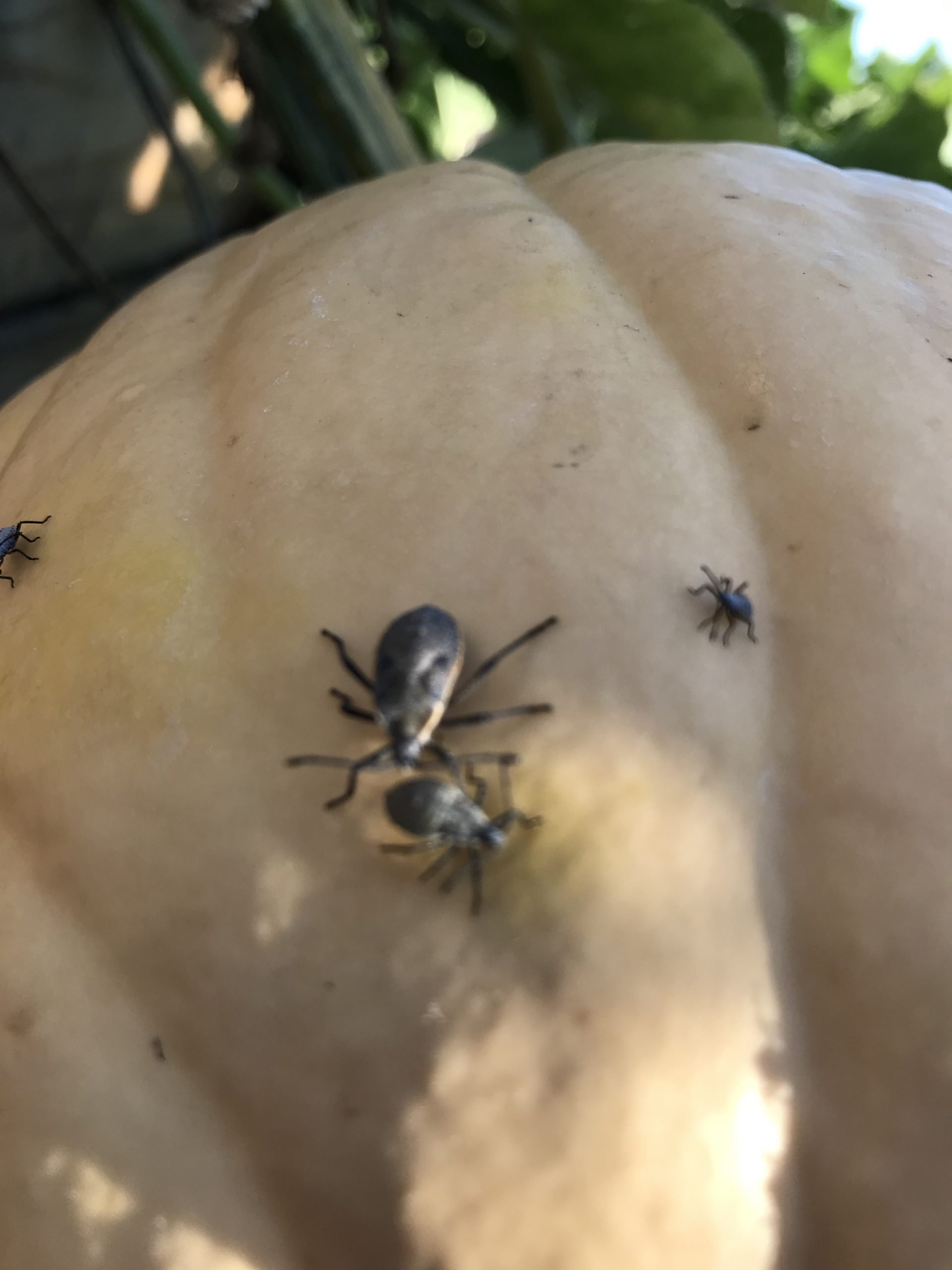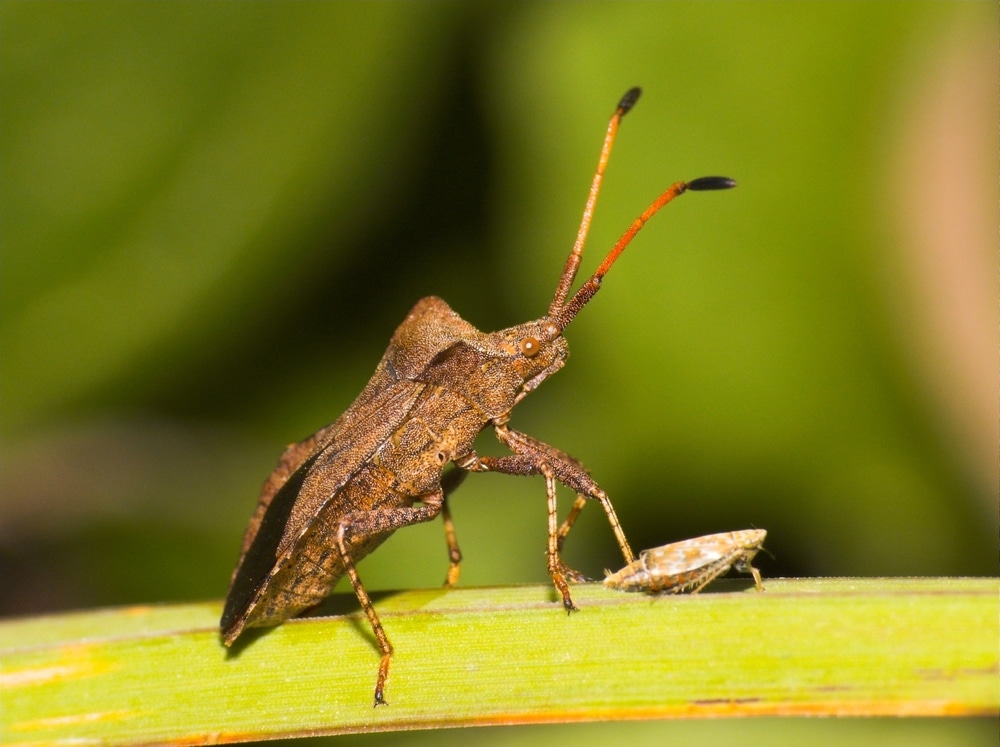
Early in the morning, turn the boards over to expose them and either smash them or place them in a container of soapy water. Take advantage of the squash bug’s natural tendency to hide under objects at night, by placing boards around your cucurbits. You can also loop a piece of duct tape around your hand with the sticky surface facing out, to pick up the squash bugs and eggs. If you find eggs, simply smash them or scrape them into the container as well. Pick the bugs off by hand and drop them in a container of soapy water. This can be the easiest, safest, and cheapest method to rid your garden of these pests.
#Squash bug how to
How to Get Rid of Squash Bugs Organically In other words, if the plant doesn’t die from its sap being sucked out, it might die from the bacteria.

The bacteria can cause the plant to wilt and die, depending on the severity of the infection. If that isn’t bad enough, squash bug saliva carries a bacteria called Serratia marcescens, which causes Anasa or cucurbit yellow vine disease. Discoloration and death of leaf tissue following feeding by squash bugs, by John Capinera, Univ. These sites will turn brown and then, depending on the severity, turn black before dying.


Leaves, for example, will be marked with yellow specks where they have been pierced. Unfortunately, adults and nymphs alike pierce leaves, stems, vines, and fruit with their proboscis to suck the sap out of the plant. Damage to Your Gardenīecause squash bugs are often found in large numbers, they can do considerable damage. The process takes about one month, and when they reach the final instar, they will look like miniature versions of the adult squash bug. As the nymphs mature and move through the instars, they will become gray-green before turning darker and losing their “fuzzy” appearance. This is the first of five instars or nymph stages that the insect will undergo. at AmherstĪfter about one week, soft-bodied nymphs with red or black legs will emerge from the eggs. Squash bug nymphs emerging from eggs – CFAES at Ohio State University Squash bug nymphs and eggs. This difference should make it easier to determine which kind of squash pest you’re dealing with. Compare this to the squash vine borer, another enemy of the cucurbit gardener, which does not lay its eggs in clusters. The female squash bug will lay between one and three clusters at a time with each cluster containing approximately 15-20 eggs. The eggs are laid in clusters, usually on the underside of leaves. They will fly to cucurbits in your garden where they will lay soft, yellow eggs that will harden and turn copper-colored. When temperatures turn warm, adult squash bugs will come out from rocks crevices, woodpiles, or wherever they’ve overwintered. Instead of pupating as many insects do, the squash bug transitions from an egg, to nymph, to adulthood. If you use the internet to help you identify bugs, be sure to use a site that you trust. I’ve noticed when searching for images of these insects online that many of them have been misidentified. Still, others mistake squash bugs for kissing bugs–a kind of assassin bug–which have a narrow “stick-like” head or “cone-nose.” Leaf-footed bug, Okra In My Garden Kissing bug, Texas A&M Ag Extension However, the latter is easy to identify because of the noticeable “leaf” shape flare located on each of its hind legs.

Squash bugs are also confused with leaf-footed bugs, another member of the Coreidae family. Both insects put off a foul odor when disturbed or smashed. The stink bug can be distinguished from the squash bug by its wider body. A Case of Mistaken IdentityĪdult squash bugs are often mistaken for stink bugs, which is not surprising considering they are both a part of the Coreidae family of sap-sucking insects. Their flat bodies, which can also vary somewhat, are about 1/2″ long and are shaped like a shield with a triangle on the back. But these garden pests will also attack other cucurbits like pumpkins, cucumbers, gourds, and melons.Īdult squash bugs vary somewhat in color from gray-brown to gray-black, with some having light brown markings along the edge of their abdomen. True to their name, they prefer squash plants, such as yellow squash, acorn squash, crookneck squash, patty pan (scallop) squash, and zucchini. Those scary, prehistoric-looking insects that are the bane of gardens, large and small.


 0 kommentar(er)
0 kommentar(er)
